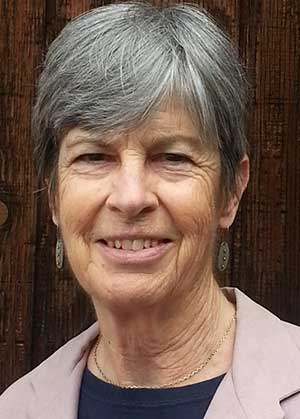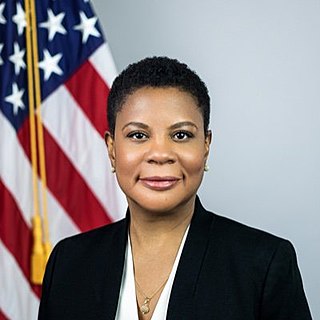Related Research Articles

Ann Druyan is an American documentary producer and director specializing in the communication of science. She co-wrote the 1980 PBS documentary series Cosmos, hosted by Carl Sagan, whom she married in 1981. She is the creator, producer, and writer of the 2014 sequel, Cosmos: A Spacetime Odyssey and its sequel series, Cosmos: Possible Worlds, as well as the book of the same name. She directed episodes of both series.
Science is a rigorous, systematic endeavor that builds and organizes knowledge in the form of testable explanations and predictions about the world. Modern science is typically divided into three major branches: the natural sciences, which study the physical world; the social sciences, which study individuals and societies; and the formal sciences, which study formal systems, governed by axioms and rules. There is disagreement whether the formal sciences are science disciplines, as they do not rely on empirical evidence. Applied sciences are disciplines that use scientific knowledge for practical purposes, such as in engineering and medicine.

New Scientist is a popular science magazine covering all aspects of science and technology. Based in London, it publishes weekly English-language editions in the United Kingdom, the United States and Australia. An editorially separate organisation publishes a monthly Dutch-language edition. First published on 22 November 1956, New Scientist has been available in online form since 1996.

Dr. Shirley Ann Jackson, is an American physicist, and was the 18th president of Rensselaer Polytechnic Institute. She is the first African American woman to have earned a doctorate at the Massachusetts Institute of Technology (MIT) in Theoretical Elementary Particle Physics, and the first African American woman to have earned a doctorate at MIT in any field. She is also the second African American woman in the United States to earn a doctorate in physics.

The Pulitzer Prize for Explanatory Reporting has been presented since 1998, for a distinguished example of explanatory reporting that illuminates a significant and complex subject, demonstrating mastery of the subject, lucid writing and clear presentation. From 1985 to 1997, it was known as the Pulitzer Prize for Explanatory Journalism.

Susan Kilrain is an American aerospace engineer, former United States Navy officer, and a former NASA astronaut. She is the youngest person to pilot a Space Shuttle. She has flown more than 3,000 hours and among her merits she was awarded with the Defense Superior Service Medal.

Philip Morrison was a professor of physics at the Massachusetts Institute of Technology (MIT). He is known for his work on the Manhattan Project during World War II, and for his later work in quantum physics, nuclear physics, high energy astrophysics, and SETI.
JASON is an independent group of elite scientists that advises the United States government on matters of science and technology, mostly of a sensitive nature. The group was created in the aftermath of the Sputnik launch as a way to reinvigorate the idea of having the nation's preeminent scientists help the government with defense problems, similar to the way that scientists helped in World War II but with a new and younger generation. It was established in 1960 and has somewhere between 30 and 60 members. Its work first gained public notoriety as the source of the Vietnam War's McNamara Line electronic barrier. Although most of its research is military-focused, JASON also produced early work on the science of global warming and acid rain. Current unclassified research interests include health informatics, cyberwarfare, and renewable energy.

Evelyn Fox Keller was an American physicist, author, and feminist. She was Professor Emerita of History and Philosophy of Science at the Massachusetts Institute of Technology. Keller's early work concentrated at the intersection of physics and biology. Her subsequent research focused on the history and philosophy of modern biology and on gender and science.

The presence of women in science spans the earliest times of the history of science wherein they have made significant contributions. Historians with an interest in gender and science have researched the scientific endeavors and accomplishments of women, the barriers they have faced, and the strategies implemented to have their work peer-reviewed and accepted in major scientific journals and other publications. The historical, critical, and sociological study of these issues has become an academic discipline in its own right.

Helen Elizabeth Longino is an American philosopher of science who has argued for the significance of values and social interactions to scientific inquiry. She has written about the role of women in science and is a central figure in feminist epistemology and social epistemology. She is the Clarence Irving Lewis Professor of Philosophy at Stanford University. In 2016, she was elected to the American Academy of Arts and Sciences.

Alondra Nelson is an American academic, policy advisor, non-profit administrator, and writer. She is the Harold F. Linder chair and professor in the School of Social Science at the Institute for Advanced Study, an independent research center in Princeton, New Jersey. From 2021 to 2023, Nelson was deputy assistant to President Joe Biden and principal deputy director for science and society of the White House Office of Science and Technology Policy (OSTP), where she performed the duties of the director from February to October 2022. She was the first African American and first woman of color to lead OSTP. Prior to her role in the Biden Administration, she served for four years as president and CEO of the Social Science Research Council, an independent, nonpartisan international nonprofit organization. Nelson was previously professor of sociology at Columbia University, where she served as the inaugural Dean of Social Science, as well as director of the Institute for Research on Women and Gender. She began her academic career on the faculty of Yale University.
Jessa Gamble, née Sinclair, is a Canadian and English author and co-owner of the science blog The Last Word on Nothing. Her book, The Siesta and the Midnight Sun: How Our Bodies Experience Time, documents the rituals surrounding daily rhythms. Along with local languages and beliefs, these schedules are losing their global diversity and succumbing to what Gamble calls "circadian imperialism." The foreword was written by Canadian broadcaster Jay Ingram.
The Finkbeiner test, named for the science journalist Ann Finkbeiner, is a checklist to help science journalists avoid gender bias in articles about women in science. It asks writers to avoid describing women scientists in terms of stereotypically feminine traits, such as their family arrangements.
K. C. Cole is an American science writer, author, radio commentator and professor emerita at the USC Annenberg School for Communication and Journalism. She has covered science for The Los Angeles Times since 1994, as well as writing for many other publications, and has been described as "the queen of the metaphor in science writing".

Fei-Fei Li is a Chinese-American computer scientist, known for establishing ImageNet, the dataset that enabled rapid advances in computer vision in the 2010s. She is the Sequoia Capital professor of computer science at Stanford University and former board director at Twitter. Li is a co-director of the Stanford Institute for Human-Centered Artificial Intelligence and a co-director of the Stanford Vision and Learning Lab. She served as the director of the Stanford Artificial Intelligence Laboratory from 2013 to 2018.
Rachel Pearl Maines is an American scholar specializing in the history of technology. Since 2015 she has been a visiting scientist at Cornell University's School of Electrical and Computer Engineering. Her book The Technology of Orgasm won the American Historical Association's Herbert Feis Award. The book was also the inspiration for the film Hysteria and the play In the Next Room. However, one of the main claims of the book has been debunked as false.
Johanson analysis, developed by film critic MaryAnn Johanson, provides a method to evaluate the representation of women and girls in fiction. The analysis evaluates media on criteria that include the basic representation of women, female agency, power and authority, the male gaze, and issues of gender and sexuality. Johanson's 2015 study, funded by a Kickstarter campaign, compiled statistics for every film released in 2015, and all those nominated for Oscars in 2014 or 2015. She also drew conclusions about movie profitability when women are represented well.
Rowan Jacobsen is an American author and journalist. He is known for his writings on nature, science, sustainability, and the organoleptic experience.
Richard Panek is an American popular science writer, columnist, and journalist who specializes in the topics of space, the universe, and gravity. He has published several books and has written articles for a number of news outlets and scientific organizations, including Scientific American, WIRED, New Scientist, and Discover.
References
- ↑ Brainard, Curtis (March 22, 2013). "The Finkbeiner Test". cjr.org. Retrieved October 9, 2020.
- 1 2 "About Ann Finkbeiner" . Retrieved October 9, 2020.
- ↑ O'Hara, Delia (March 25, 2020). "AAAS Fellow Ann Finkbeiner Set a New Standard for Writing About Women Scientists" . Retrieved October 9, 2020.
- ↑ "Defense Technology International (DTI) Magazine - USA Military Media - MondoTimes.com". www.mondotimes.com. Retrieved 2022-03-08.
- ↑ "Books" . Retrieved August 11, 2021.